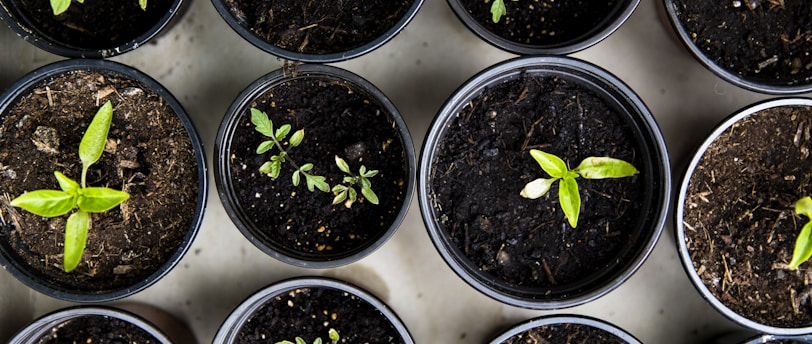Bucket gardening
Pros, Cons, and Best Practices
10/2/20233 min read


Gardening in buckets is a fun and creative way to grow plants especially if you don't have access to traditional garden space. Five gallon buckets provide all the essentials for plant growth in a compact container format. However, there are some pros and cons to consider before starting a bucket garden. Let's dig in.
Pros of Bucket Gardening:
Space Saving - Buckets, 5 gallon or otherwise, allow you to garden virtually anywhere, even on a balcony, patio or small yard. They take up very little floor space and can be stacked or hung to maximize limited areas. You will save an even larger amount of space if you're able to acquire square containers.
Portability - Lightweight buckets are easy to move around. This allows you to adjust bucket placement for optimal sun exposure throughout the day. You can also bring plants inside during extreme weather. Or, in the event of bugging out, you can take a portion of your garden with you; assuming you have the vehicle space to accommodate the plants.
Customization - You have full control over the soil medium and amendments in buckets. This allows for tailored nutrient and moisture levels specific to each plant's needs. You can even let the creativity flow by turning the outside of the container into an art canvas, of sorts.
Quick Start - Buckets get warmed by sunlight faster than bare ground, so plants may get a head start on the growing season. Their size also promotes faster soil warming and drying. Additionally, there is no need to till soil by hand or machinery.
Cons of Bucket Gardening:
Limited Soil Volume - Only 5 gallons of soil is constrained for root growth. Plants with extensive root systems like tomatoes may outgrow buckets quickly. As a result, your yield per plant could be smaller in size of fruit/vegetable, as well as quantity.
Watering Needs - Small soil volumes dry out faster, requiring more frequent watering than traditional gardens. This can be inconvenient and leads to greater chances of over- or under-watering. A trick used in days past is to simply fill an additional vessel with water and place a length of cotton rope from the bucket of water to the plant; running the rope along the inside of the bucket. You'll also likely want to place your buckets a
Lifespan - Plastic buckets will eventually break down from sun exposure over multiple seasons. Wooden or metal buckets last longer but may leach chemicals into the soil. So, this is really a personal choice after your due diligence.
Best Practices for Bucket Gardening:
Start with high quality potting soil to provide nutrients and retain moisture and structure as roots fill the bucket. Mushroom compost is an amazing addition, too! Remove any soil tags or labels that could leach chemicals. Punch drainage holes in the bottom and line with landscape fabric to prevent soil from washing out. Choosing compact, bushy plant varieties suited to container growth will increase your success ten fold. Herbs, greens, strawberries, dwarf tomatoes and flowers often thrive in buckets. Provide a trellis or stake for vining plants.
Grouping buckets together on impermeable surfaces like concrete will allow an easy watering experience. You'll also do well to elevate individual buckets on pot feet or bricks for improved drainage. We also suggest applying a 2-3 inch deep layer of mulch to retain moisture and suppress weeds.
Fertilize regularly with a balanced, water soluble plant food to replace nutrients removed with watering. Depending upon the type of plant, blood meal is a highly nutritious addition. Rotate bucket placement weekly to ensure even sun exposure. Move buckets to shelter,, or cover, during excessive rain or wind.
With the right planning and care, bucket gardening can provide the rewards of homegrown produce and flowers even in small spaces. Just be prepared for the additional maintenance demands of containers. But the flexibility, customization and sense of accomplishment make bucket gardening a fun and productive way to garden.
Thanks for reading! Get Prepped!
